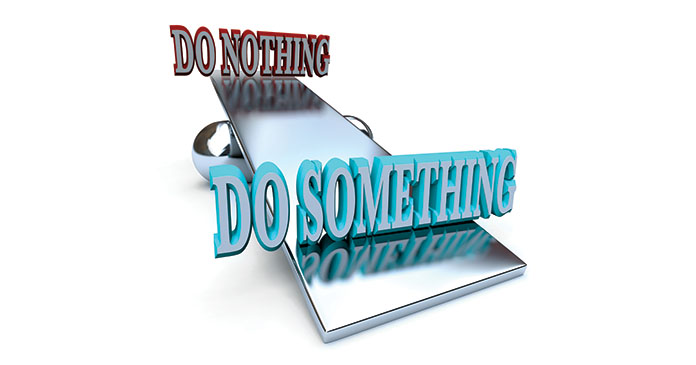As Bertie examined my elbow, I reminded him of everything I had done to try to fix my problem. When it began to hurt, I used ibuprofen. When that didn’t work, we tried two injections of cortisone, six months apart. Meanwhile, I did physical therapy, tried ultrasound, used a brace, performed daily exercises, applied ice, and went to acupuncture and massage. Pushed to the edge, I even did an experimental therapy—a platelet-rich plasma injection, which had gained media attention because some high-profile athletes had used it. The shot was incredibly painful and only made my problem worse.
“Nothing has helped!” I complained.
“I have an idea,” Bertie said. “Something we haven’t yet tried.”
“What?” I hoped it wouldn’t be too timeconsuming or expensive.
“You just said it yourself,” he replied. “Nothing.”
He suggested I stop all treatments for the next six months. “All your attempts to fix your elbow might just be agitating it,” he told me. “I bet after a few months of doing nothing the pain will just go away.”
I was skeptical but game. Sure enough, within a few months, my pain had disappeared.
In my last blog post, Restore Yourself to Your Factory Default Settings, I suggested that doing nothing for a minute might help change things.
Sometimes, though, it’s worth taking that to the extreme. In some situations, doing nothing—forever—is the right response. With my tendonitis, doing nothing helped. Sometimes, not trying to fix something is precisely what’s needed to fix it. It’s a hard strategy to follow because we have penchant for being proactive. If there’s a problem, we feel better when we attack it aggressively.
But consider the idea that we might spend a lot of time, effort, and money solving problems that can’t, in fact, be solved with time, effort, and money.
In 2009, Americans spent about $3.6 billion on over-the-counter cold, cough, and throat remedies, according to the New York Times. And yet, the article concluded, there’s very little evidence that any of those medicines do anything to cure, or even shorten the duration of, a cold. And some remedies, like taking antibiotics, bring along side effects that risk making some people worse.
In other words, the best strategy for coping with the common cold is to do nothing.
Does this strategy apply outside medicine? There’s a lot of talk these days about creating new businesses through incentives. Does the money and effort put into incentives help? According to a study released by the Kauffman Foundation, the answer is no.
Data from the U.S. Census Bureau indicates that the number of new businesses started each year between 1977 to 2005 varied only by 3 percent to 6 percent. According to the study, “none of the factors that might bear on prospective entrepreneurs’ decisions to form new companies—recessions, expansions, tax changes, population growth, scarce or abundant capital, technological advances or others—has much impact on the pace of U.S. startups.”
In other words, the best strategy for stimulating new business creation is to do nothing.
How about interpersonal relationships? Some time ago, I had a falling out with someone close to me. I tried several times to address it—I sent emails, made phone calls, and even sent a gift—but nothing I did left either of us feeling any better. Eventually I gave up and wrote the person off. For a long time, I did nothing.
Recently, I saw this person again and, somehow, it felt like that falling out was behind us. Well, mostly. It wasn’t as nice as it had been before the falling out. But it was a lot better than when we were trying to actively work it out.
I’m not suggesting we address all problems by doing nothing. Often addressing something head-on is precisely what’s needed. It can be incredibly effective to bring something up that’s been simmering in the background and deal with it openly. I’m a huge fan of discussing undiscussables, and I’ve seen it work wonders.
But how many unnecessary arguments could have been avoided by brushing off something unimportant? Perhaps we could have allowed someone’s weakness to go unmentioned. Maybe we could have forgiven without requiring an act of contrition.
In other words, sometimes, the best strategy for working out a difficult interpersonal issue is to do nothing.
So how do we know whether to do something or nothing?
“When many cures are offered for a disease,” wrote Chekhov, “it means the disease is not curable.” If past experience or data suggests that multiple solutions are possible but none are reliably successful, nothing may be the best strategy.
Also, if you’ve tried two or three solutions and none of them have worked, perhaps it’s time to try nothing.
It’s been about two years since my elbow stopped hurting. But I’m superstitious and, quite frankly, a little worried that writing this post—declaring so brashly that I conquered my tendinitis by doing nothing—will somehow start the pain again.
I hope that doesn’t happen. But if it does, at least now I know what I’m going to do: nothing.
Author Peter Bregman















